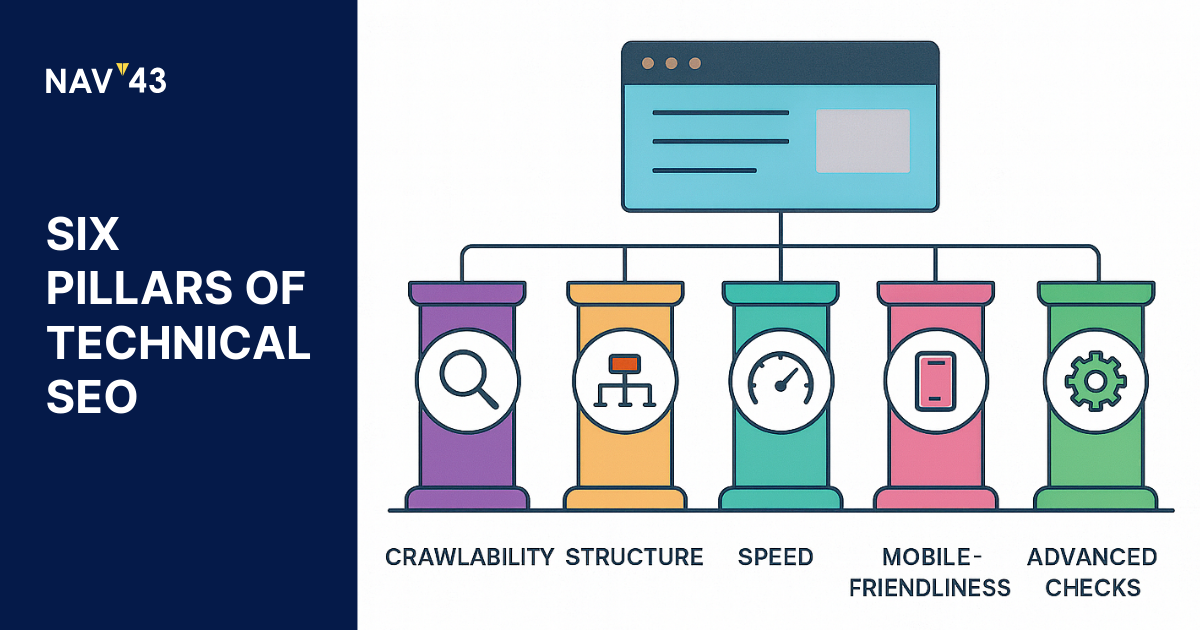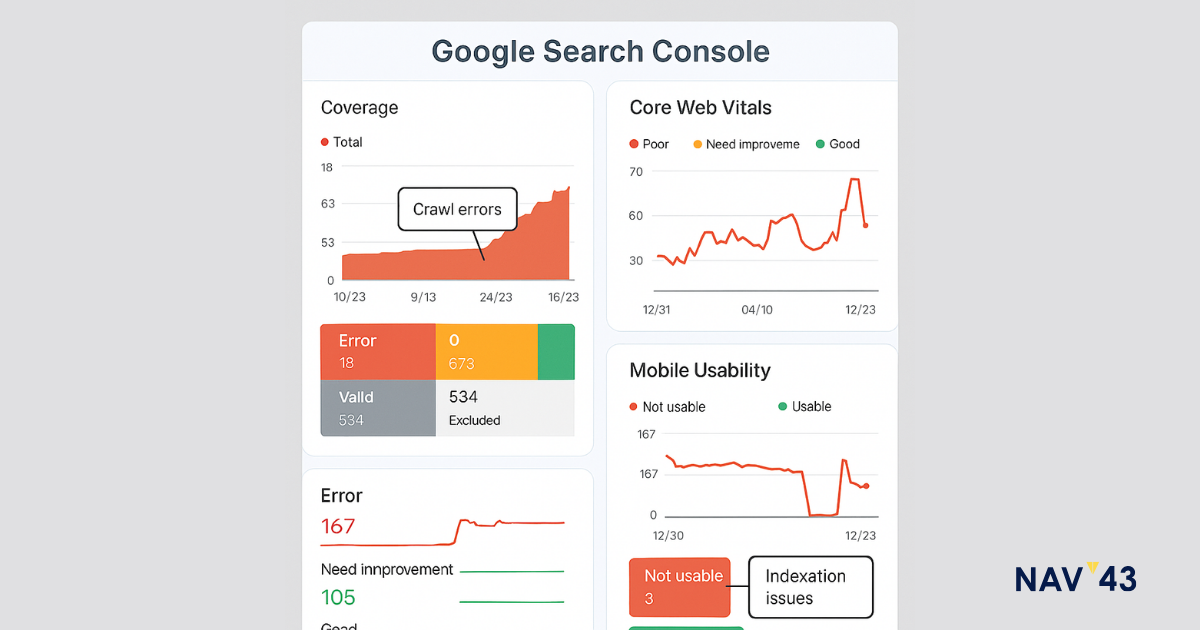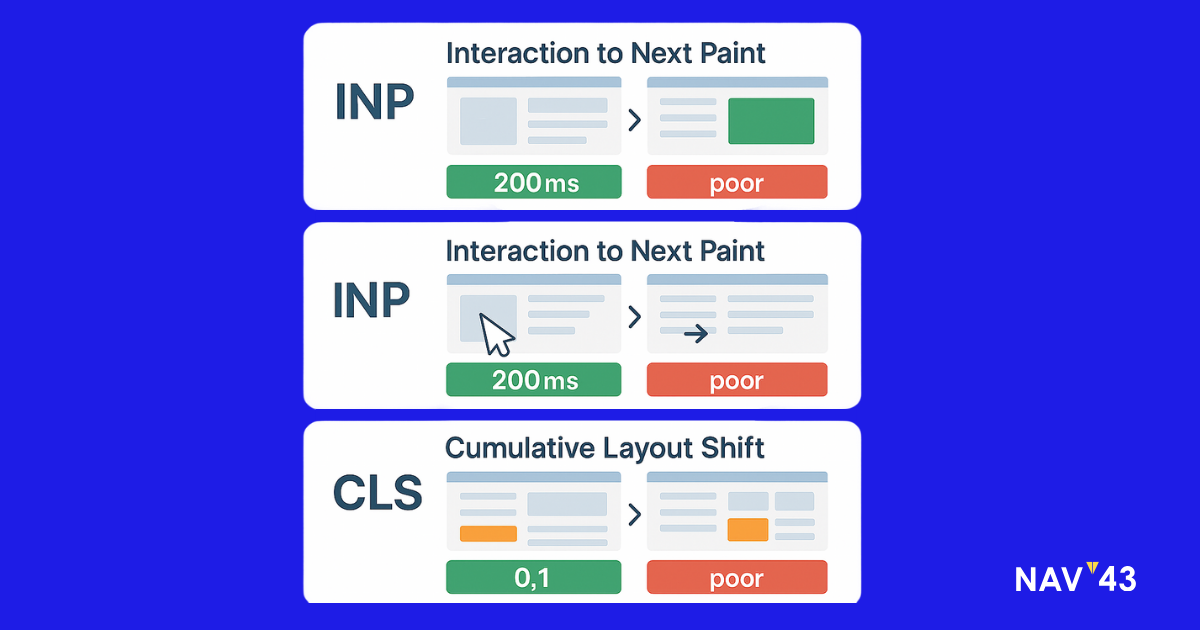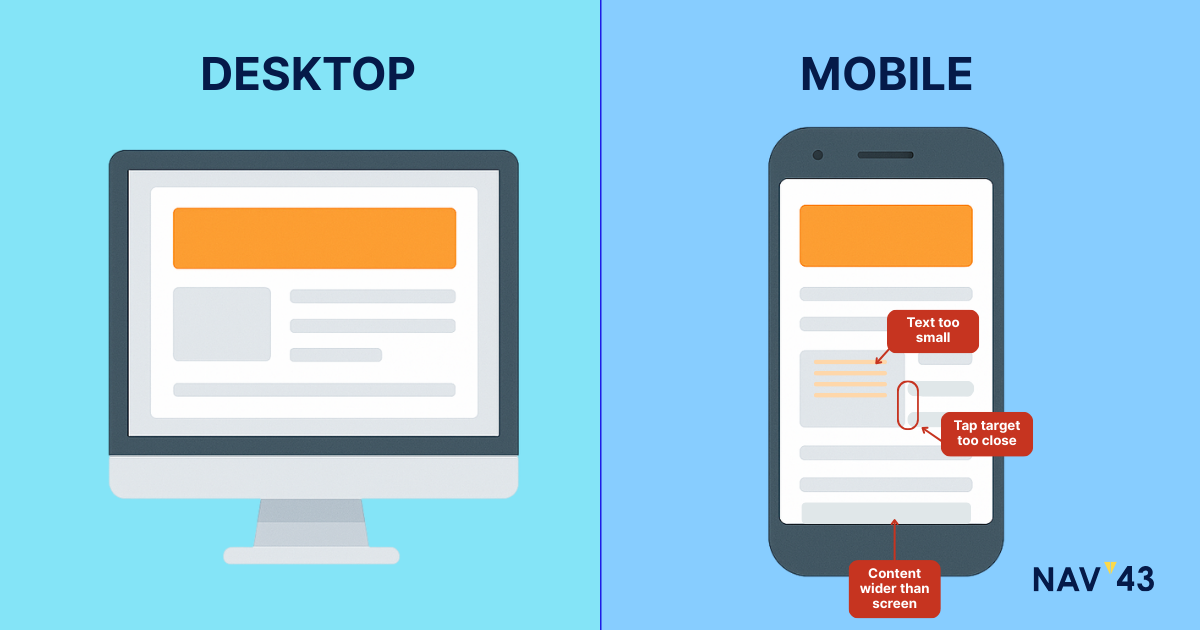
Technical SEO Audit Checklist: How to Strengthen Your Site’s Foundation
Technical SEO is the silent powerhouse behind every high-ranking website. While on-page content and backlinks capture most of the spotlight, issues such as broken links, slow load times, and faulty redirects can quietly erode your visibility. This guide delivers a proven, step-by-step technical SEO audit process to keep search engines, and users, happy.
Technical SEO encompasses the behind-the-scenes factors that enable search engines to crawl, index, and render your content. Unlike on-page SEO (which focuses on content and keywords), technical SEO optimizes a site’s infrastructure, code, server, and architecture, so that Googlebot and users can access pages quickly and reliably. Without a solid technical foundation, even the best content may never surface in search results.
If your site isn’t crawlable, it won’t get included in Google’s index and therefore won’t be visible in the search results. Crawl or index errors directly reduce your visibility and traffic. A thorough technical audit is essential, as it identifies and resolves any barriers that block search engines or users, including broken links, misconfigurations, slow load speeds, and mobile issues.
Why Technical SEO Audits Matter
Discoverability is the foundation of search visibility. Pages blocked by robots.txt or plagued with 404 errors never reach Google’s index. When search engines can’t access your content, neither can your potential customers. This creates a cascading effect where your best content remains invisible, no matter how valuable or well-optimized it might be.

User experience directly impacts your bottom line. Technical issues, such as broken links and slow load times, contribute to a poor user experience, driving visitors and revenue away. Google research shows that even small speed gains translate to business results: for mobile retail pages, every 100ms improvement in load time can boost conversions by up to 2%. More than half of mobile visitors abandon a web page if it doesn’t load in 3 seconds.
Technical optimization provides a competitive edge. Fewer technical errors mean more crawl budget for new content, faster updates in SERPs, and higher trust signals. When your site runs smoothly, Google allocates more resources to discovering and indexing your fresh content, rather than struggling with errors. This efficiency translates directly to how quickly your new pages appear in search results.
A fast-loading website with a responsive design enhances user experience and indirectly boosts the time visitors spend engaging with your content. These positive user signals contribute to higher rankings, creating a virtuous cycle of improved visibility and engagement.
Technical SEO Audit Framework (Overview)
A comprehensive technical SEO audit examines six critical pillars that form your site’s foundation. Each pillar addresses specific aspects of how search engines and users interact with your site. This systematic approach ensures no critical issues slip through the cracks. A technical SEO audit tool can help analyze site architecture and hierarchy as part of a comprehensive audit.

The six pillars of technical SEO are:
- Crawlability & Indexing: Ensuring search engines can discover and process your pages
- Site Structure & Navigation: Creating logical pathways for users and bots
- Performance & Core Web Vitals: Delivering fast, stable page experiences
- Mobile-Friendliness: Optimizing for Google’s mobile-first index
- Security (HTTPS): Protecting user data and trust signals
- Advanced Checks: Duplicate content, structured data, JavaScript SEO, international SEO, and monitoring
Each pillar builds upon the others. A secure, well-structured site means nothing if search engines can’t crawl it. Similarly, perfect crawlability won’t help if pages load too slowly for users to engage. This interconnected nature makes comprehensive auditing essential.
Crawlability & Indexing
Search engines like Google use crawlers to discover and index your content. Ensuring crawlability is essential for all major search engines, not just Google, so that your pages can be found and indexed across all leading platforms. If pages don’t appear in Google’s index, Google can’t rank them. This fundamental truth makes crawlability your first audit priority.

1. Validate Robots.txt & XML Sitemaps
Your robots.txt file acts as a gatekeeper, telling search engines which parts of your site they can access. Even a single misplaced directive can block critical pages from being indexed, and a misconfigured robots.txt file can unintentionally block the entire site from being crawled and indexed. Check your robots.txt file in Google Search Console’s Coverage report to ensure no important pages are accidentally disallowed.
XML sitemaps serve as roadmaps for search engines. An XML sitemap lists all the important pages on your website, helping search engines like Google discover and index your content more easily. Verify that:
- All sitemap URLs return 200 status codes (not 404s or redirects)
- URLs use HTTPS protocol consistently
- The sitemap is submitted and recognized in Search Console
- No disallowed pages appear in your sitemap
2. Fix Crawl Errors
Broken links and server errors waste precious crawl budget and create poor user experiences. Use tools like Screaming Frog or Sitebulb to identify broken links as part of your crawl error audit, along with:
404 errors (page not found): Either restore the missing content or implement 301 redirects to relevant alternatives. Don’t leave broken internal links pointing to these pages.
5xx server errors: These make pages completely inaccessible to both users and search engines. Fix these urgently as they block Googlebot entirely. Check server logs to identify patterns or recurring issues.
Redirect chains: Simplify any chains of 301 redirects to a single hop. Multiple redirects waste crawl budget and slow page access. Update internal links to point directly to final destinations.
3. Confirm Indexation
Pages missing from Google’s index can’t generate traffic. Use Google Search Console’s “Pages” report to identify excluded pages. Common culprits include:
Unexpected noindex tags: Review meta robots tags and HTTP headers for accidental noindex directives. Development sites often carry these over to production.
Orphaned pages: Orphaned pages are those with zero incoming internal links and may never be discovered by crawlers. Every page should have at least two internal links from relevant, high-authority pages. Use site crawlers to identify these orphaned pages and integrate them into your site structure.
Crawl frequency issues: Monitor server logs to understand how often Googlebot visits different sections. Low crawl rates might indicate structural problems or quality concerns.
A well-optimized URL structure makes it easier for Google to crawl and index your site. Good architecture makes content easier for search engines and users to access and navigate. Improper internal linking, slow page loads, or confusing structure can inadvertently prevent your site from surfacing in search results. Additionally, duplicate content issues can arise when multiple pages have similar or identical content; in such cases, using canonical tags helps specify the main version and consolidate ranking signals.
1. Optimize URL Hierarchy
URLs should be simple, descriptive, and follow consistent patterns. Clean URLs benefit both users and search engines:
- Keep slugs short, lowercase, and hyphenated
- Avoid excessive parameters or session IDs
- Maintain consistent trailing slash usage
- Canonicalize any duplicate paths (www vs non-www)
Deep or complex URLs signal poor organization. If users can’t understand a URL at a glance, search engines may struggle too. Restructure overly nested paths and consolidate similar content under logical categories.
Important pages should be reachable within 3 clicks from the homepage. Pages buried deep in navigation receive less crawl attention and appear less important to search engines.
Implement breadcrumb navigation to help users understand their location within your site’s hierarchy. Breadcrumbs improve usability and crawlability while potentially appearing in search results. Add breadcrumb schema markup to maximize their impact.
Review your main navigation menu for clarity and efficiency. Group related content logically and ensure menu structures reflect your content priorities. Users should intuitively find what they need without hunting through multiple levels.
3. Strengthen Internal Links
Internal links spread authority throughout your webpages and help crawlers discover content. Every new or updated page needs integration into your existing link structure.
Link strategically from high-authority pages to boost newer content. Your homepage, main category pages, and popular posts carry the most weight. Internal links from these pages help distribute page authority across your site, improving both search engine rankings and user navigation. Use these power pages to elevate important but less visible content.
Fix broken internal links immediately. These create dead ends for users and waste link equity. Regular link audits catch these issues before they accumulate. Update outdated anchors that no longer accurately describe destination content.
Performance & Core Web Vitals
Core Web Vitals are a set of three performance metrics that measure how user-friendly your site is. Website speed is a critical factor for both user experience and search engine rankings, and optimizing Core Web Vitals directly impacts your site’s performance in these areas. Google uses these metrics as ranking factors, making optimization crucial for both user experience and search visibility.

1. Measure Core Web Vitals
Target thresholds for “good” scores:
- LCP (Largest Contentful Paint): ≤2.5 seconds
- INP (Interaction to Next Paint): ≤200 milliseconds
- CLS (Cumulative Layout Shift): ≤0.1
Audit real-user data in Google Search Console’s Core Web Vitals report. Lab data from tools provides guidance, but Google ranks based on actual user experiences. Google PageSpeed Insights is a valuable tool for analyzing and improving site load times. Focus fixes on pages showing poor real-world performance.
2. Improve Largest Contentful Paint
LCP measures when your main content becomes visible. The largest element, often a hero image or heading, determines this metric. Optimizing LCP requires prioritizing above-the-fold content.
Compress hero images aggressively using modern formats. WebP or AVIF formats can be 25% smaller than JPG/PNG while maintaining quality. Don’t lazy-load your main hero image; this delays LCP unnecessarily.
Preload critical resources using resource hints. Tell browsers which fonts, images, or styles they’ll need immediately. This parallel loading shaves precious milliseconds off render time.
3. Reduce JavaScript & Third-Party Bloat
Heavy JavaScript blocks the main thread, delaying interactivity. Blocked or broken JavaScript files can also prevent search engines from properly rendering and indexing your pages, so it’s important to ensure these files are accessible. Each third-party script adds latency through additional DNS lookups and execution time.
Defer non-critical scripts using async or defer attributes. Analytics, chat widgets, and social buttons rarely need immediate loading. Move these below critical content in your loading sequence.
Remove unnecessary third-party scripts entirely. Audit each external resource for actual value. That abandoned A/B testing script or unused font library might be costing you rankings. Self-host essential libraries when possible to reduce external dependencies.
4. Stabilize Layout Shifts
Unexpected layout shifts frustrate users and harm CLS scores. Reserve space for dynamic content to prevent jarring movements.
Set explicit width and height attributes on all images and videos. Modern browsers use these to reserve space before assets load. For responsive images, use CSS aspect-ratio properties.
Ad slots and embedded content need defined dimensions. Don’t let late-loading ads push content around. Use min-height CSS or slot reservations to maintain stable layouts.
Mobile-Friendliness
Mobile devices generate just under 60% of global web traffic, and Google exclusively uses mobile versions of pages to rank and index content. This approach, known as mobile first indexing, is a crucial aspect of technical SEO. Mobile-friendliness has been a ranking factor since 2015, making mobile optimization non-negotiable.

1. Run Google Mobile-Friendly Test
Google’s Mobile-Friendly Test catches common usability issues that frustrate mobile users. Fix problems like:
- Text too small to read without zooming
- Clickable elements too close together
- Content wider than screen
- Viewport not configured properly
Touch targets need adequate spacing for fat fingers. Google recommends at least 48 CSS pixels between tappable elements. Review forms, navigation menus, and button layouts specifically.
2. Ensure Content Parity
Your mobile site must include the same primary content as desktop. Google primarily indexes the mobile version, so missing mobile content won’t rank regardless of desktop optimization.
Verify critical elements appear on mobile:
- All important text content and headings
- Structured data markup
- Meta tags and canonical tags
- Internal links and navigation
If using separate mobile URLs (m.example.com), ensure proper synchronization and rel=alternate tags. However, responsive design remains the recommended approach.
3. Optimize Mobile Performance
Mobile connections often suffer from slower speeds and higher latency. Every performance optimization matters more on mobile devices.
Use responsive images with srcset attributes to serve appropriately sized images for different screen resolutions. A desktop-sized hero image wastes mobile bandwidth and delays rendering.
Implement lazy-loading for below-the-fold assets. Mobile users shouldn’t download images they might never scroll to see. Modern browsers support native lazy-loading with simple loading=”lazy” attributes.
Security (HTTPS)
HTTPS protects user data and serves as a baseline trust signal. While not a major ranking factor, HTTPS can contribute to better performance in search results through improved user engagement and lower bounce rates.
Install a valid SSL certificate covering all subdomains. Wildcard certificates simplify management for complex sites. Ensure certificates stay current—expired certificates break user trust and accessibility.
Force 301 redirects from HTTP to HTTPS at the server level. Don’t rely on JavaScript or meta refreshes. Update all internal links, canonical tags, and sitemap URLs to use HTTPS protocols.
Scan for and correct mixed-content warnings. These occur when HTTPS pages load resources over insecure HTTP connections. Browsers block this content, breaking functionality. Update hardcoded HTTP references in templates, databases, and content.
Enable HTTP/2 or HTTP/3 protocols for improved performance over encrypted connections. These newer protocols multiplex requests efficiently, especially benefiting HTTPS sites.
Advanced Checks
Beyond core technical factors, several advanced optimizations can differentiate your site’s performance and visibility. Off page SEO, such as analyzing your website’s backlink profile, is also an important aspect of a comprehensive technical SEO audit, as it helps enhance authority, trustworthiness, and search engine rankings.
1. Duplicate Content & Canonicals
Duplicate content exists elsewhere on the internet, whether on another website or your own. This dilutes ranking signals and confuses search engines about which version to rank.
Implement canonical tags correctly on every page. Each canonical should point to the most authoritative version. Common duplicate content sources include:
- URL parameters for sorting or filtering
- Print versions of pages
- Mobile vs desktop URLs
- HTTP vs HTTPS versions
- WWW vs non-WWW variants
2. Structured Data Validation
Structured data is information you provide to help search engines understand your page and its contents. While schema markup doesn’t directly boost rankings, it enables rich results, such as rich snippets, in search results that improve visibility and click-through rates.
Test every page type with Google’s Rich Results Test. Fix JSON-LD syntax errors and ensure markup accurately represents page content. Focus on high-impact schemas like:
- Product (price, availability, reviews)
- Article (author, date, headline)
- Local Business (hours, location, contact)
- FAQ and How-to content
3. Hreflang for International Sites
Multilingual sites require proper hreflang implementation to deliver accurate regional content. Each page must reference itself plus all alternate language versions.
Common hreflang mistakes cause significant indexing issues. Verify that every alternate URL exists and returns 200 status. Check for proper language and region codes. Missing self-referential tags break the entire implementation.
4. JavaScript Rendering Tests
Modern sites often rely on JavaScript for content rendering. While Googlebot now executes JavaScript, rendering happens asynchronously and can be delayed.
Use Search Console’s URL Inspection tool to see how Google renders your pages. Compare rendered HTML against your source code. If critical content appears only after JavaScript execution, consider server-side rendering or dynamic rendering solutions.
5. Server Log & Monitoring Setup
Server logs reveal actual crawler behavior versus assumptions. Analyze logs to understand:
- Crawl frequency across different sections
- Bot access patterns and preferences
- Potential crawl blocks or errors
- Resource waste on low-value pages
Set up automated monitoring for critical technical metrics. Alert on sudden spikes in 404 errors, Core Web Vitals regressions, or indexation drops. Early detection prevents minor issues from becoming major problems.
Tools & Resources
Effective technical auditing requires the right toolkit. Different tools excel at different aspects of technical SEO. SEO tools are essential for automating and streamlining the technical SEO audit process, helping to monitor website performance and identify issues that can impact rankings.
Free tools provide excellent starting points:
- Google Search Console: Indexation, Core Web Vitals, mobile usability
- PageSpeed Insights: Performance analysis with Lighthouse data
- Chrome DevTools: Real-time performance profiling
- WebPageTest: Detailed waterfall analysis
- Google’s Mobile-Friendly and Rich Results tests
Paid tools offer comprehensive auditing at scale:
- Screaming Frog: Desktop crawler for technical analysis and as a site audit tool to identify and fix technical issues
- Sitebulb: Visual site architecture mapping
- SEMrush Site Audit: Cloud-based recurring audits and robust site audit tool features
- Ahrefs Site Audit: Integrated with backlink data and technical site audit tool capabilities
Choose tools based on site size and audit frequency. Small sites might suffice with free tools and manual checks, including reviewing and optimizing title tags. Large sites benefit from automated, scheduled crawling with detailed reporting, ensuring that title tags and other on-page elements are properly optimized.
Common Pitfalls & Quick Wins
Some technical issues appear repeatedly across sites. Addressing these common problems often yields immediate improvements.
Orphan pages lacking internal links waste valuable content. Run a comprehensive crawl comparing XML sitemap URLs against discovered pages. Reintegrate orphans through contextual internal linking.
Bloated JavaScript frameworks on content pages slow performance unnecessarily. Static blog posts rarely need React or Angular. Consider static site generation or progressive enhancement for content-heavy sections.
Uncompressed images in blog archives accumulate over time. Bulk-optimize existing media libraries using tools like ImageOptim or online services. Implement automated optimization for future uploads.
Quick wins often hide in obvious places. That 5MB hero image, redundant plugin, or forgotten staging robots.txt might be your biggest opportunity. Start with high-traffic pages and templates for maximum impact.
Audit Frequency & Ongoing Monitoring
Technical SEO requires continuous attention. Sites change, new issues emerge, and search engine requirements evolve.
Run a full audit quarterly to catch accumulated issues. Comprehensive crawls identify problems that develop slowly over time. Schedule these during low-traffic periods to minimize server impact.
Perform light crawls weekly on critical sections. Monitor key templates, new content, and high-value pages more frequently. Automated tools can email reports highlighting new issues.
Set up alerts for sudden changes in technical metrics. Drops in indexed pages, spikes in crawl errors, or Core Web Vitals regressions need immediate investigation. Google Search Console and analytics platforms offer customizable alerting.
Document your technical standards and communicate them to all team members. Developers, content creators, and marketers all impact technical SEO. Clear guidelines prevent issues before they occur.
Conclusion
A solid technical foundation turns great content into top rankings. Technical SEO might work behind the scenes, but its impact on visibility and user experience is undeniable. Every fixed crawl error, every millisecond shaved off load time, and every improved mobile experience contributes to your site’s success.
Use this checklist as your roadmap for technical excellence. Prioritize fixes by impact—start with crawl-blocking issues, then move to performance optimizations, and finally address nice-to-have enhancements. Remember that technical SEO isn’t a one-time project but an ongoing commitment to site health.
Schedule regular audits to stay ahead of competitors and algorithm updates. The sites that consistently rank well aren’t just those with great content—they’re the ones that make it easy for search engines and users to access that content. Your technical foundation determines how far your content can reach.
Download the Complete 120-Point Technical SEO Audit Template
Ready to put this theory into practice? Get our Google Sheets audit template, which is pre-loaded with priority columns, effort estimates, and fix descriptions to start auditing your site today.
The template includes automated formulas to calculate impact scores, track progress, and prioritize your technical fixes. Stop guessing which issues matter most and start fixing what actually moves the needle.
Get Your Free Template
- A shareable Google Sheets audit checklist with 120+ technical checks
- A 15-minute video explaining each audit step in detail
- Access to our team and Q&A with technical SEO experts

